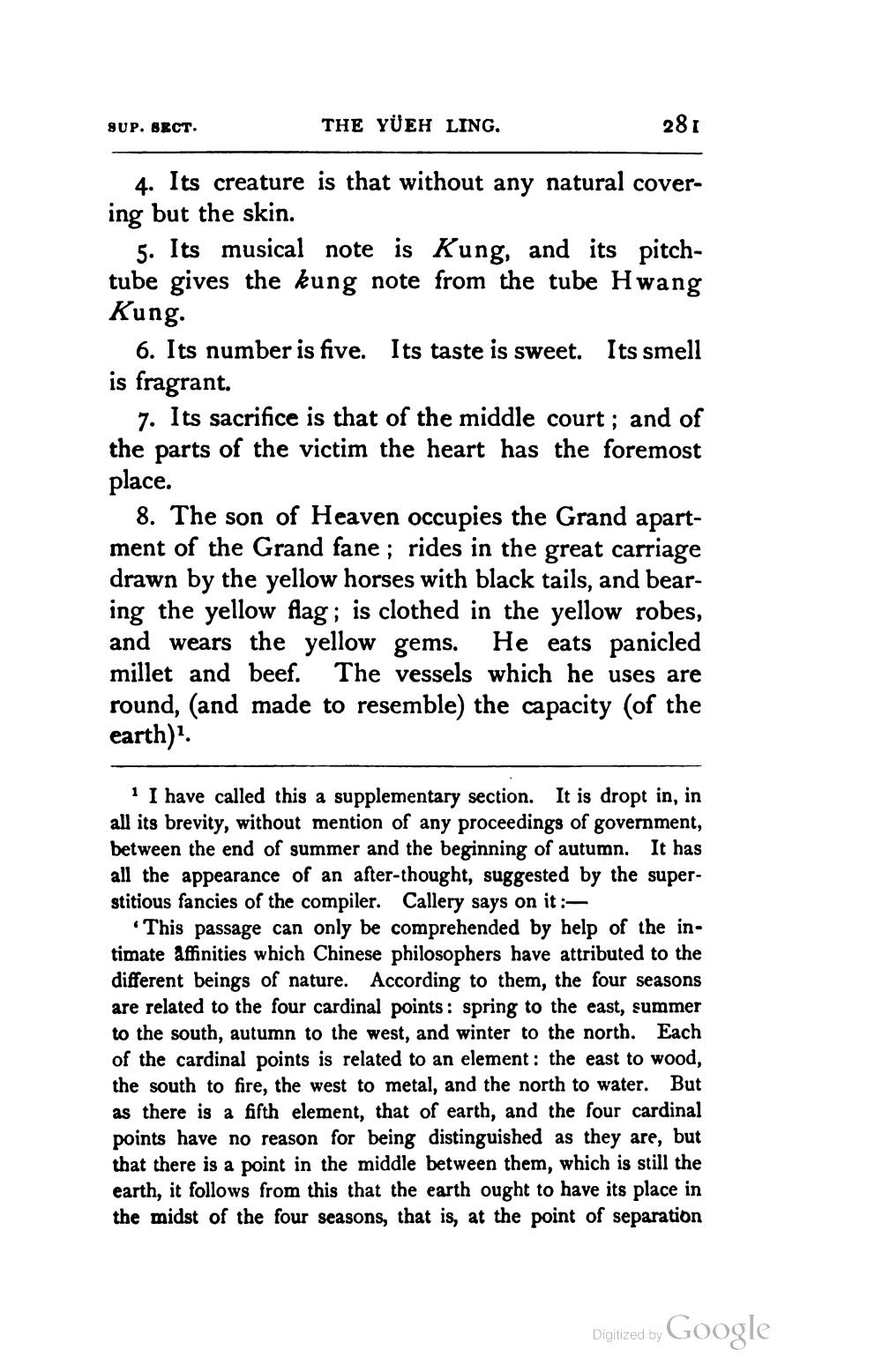________________
SUP. SECT.
THE YÜEH LING.
281
4. Its creature is that without any natural covering but the skin.
5. Its musical note is Kung, and its pitchtube gives the kung note from the tube Hwang Kung.
6. Its number is five. Its taste is sweet. Its smell is fragrant.
7. Its sacrifice is that of the middle court; and of the parts of the victim the heart has the foremost place.
8. The son of Heaven occupies the Grand apartment of the Grand fane ; rides in the great carriage drawn by the yellow horses with black tails, and bearing the yellow flag; is clothed in the yellow robes, and wears the yellow gems. He eats panicled millet and beef. The vessels which he uses are round, (and made to resemble) the capacity (of the earth)?
1 I have called this a supplementary section. It is dropt in, in all its brevity, without mention of any proceedings of government, between the end of summer and the beginning of autumn. It has all the appearance of an after-thought, suggested by the superstitious fancies of the compiler. Callery says on it:
*This passage can only be comprehended by help of the intimate affinities which Chinese philosophers have attributed to the different beings of nature. According to them, the four seasons are related to the four cardinal points: spring to the east, summer to the south, autumn to the west, and winter to the north. Each of the cardinal points is related to an element: the east to wood, the south to fire, the west to metal, and the north to water. But as there is a fifth element, that of earth, and the four cardinal points have no reason for being distinguished as they are, but that there is a point in the middle between them, which is still the earth, it follows from this that the earth ought to have its place in the midst of the four seasons, that is, at the point of separation
Digitized by Google




